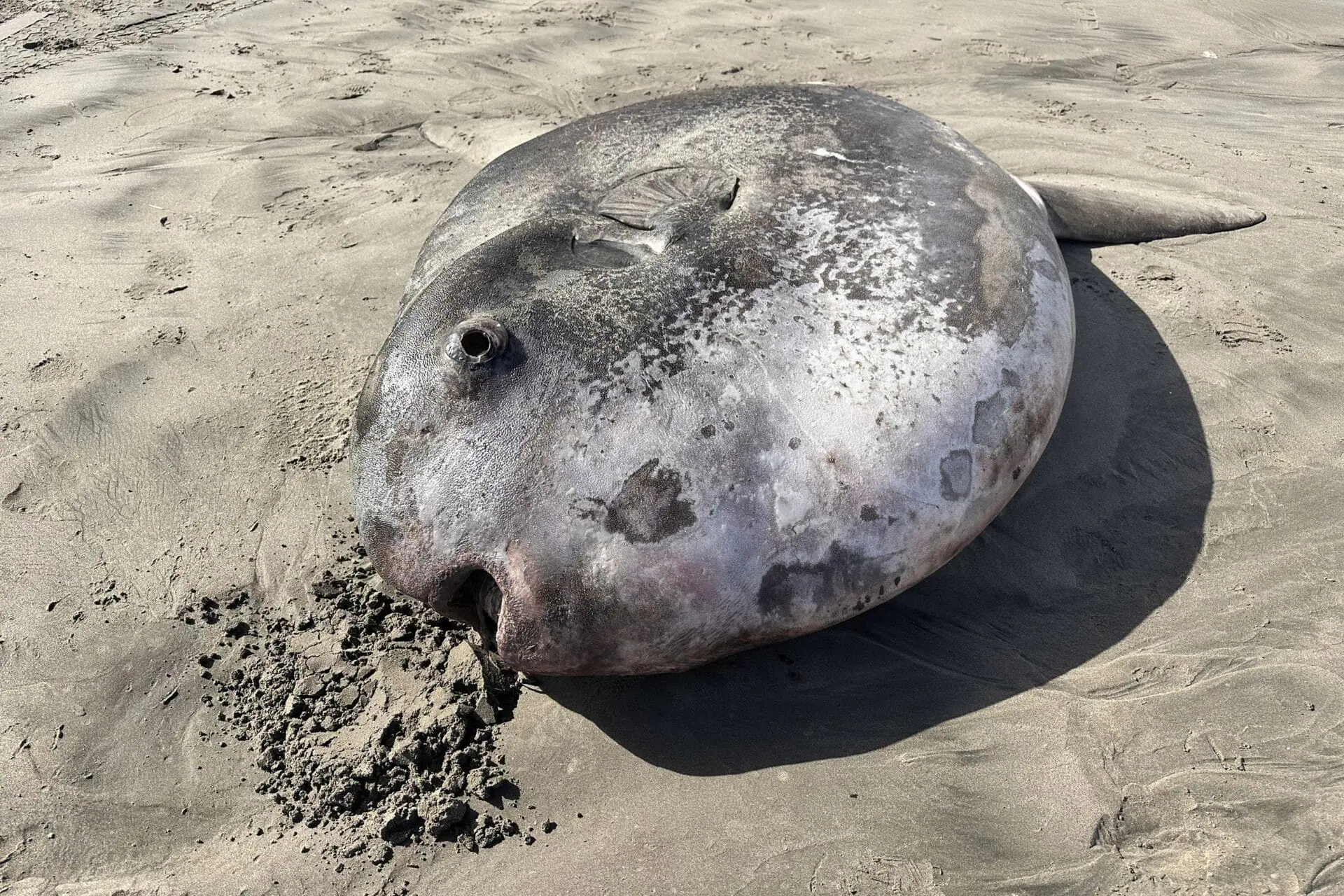Rare 7-foot hoodwinker sunfish washes ashore on Oregon beach
(CNN) — A rare 7.3-foot hoodwinker sunfish washed ashore on the Oregon coast earlier this week, the Seaside Aquarium said.
The massive aquatic species was found north of Seaside in northwestern Oregon along Gearhart Beach on June 3.
A buzz on social media led to curious people “flocking to the beach to see this unusual fish”, according to the aquarium.
In photos shared by the aquarium, the giant odd-looking fish shaped like a bloated silver dollar appeared to be lying on its side in the sand with its mouth open.
The fish was initially believed only to occupy the Southern Hemisphere’s temperate waters, but “that theory would be challenged as a few have recently washed ashore in California and one as far north as Alaska,” according to Seaside Aquarium.
The aquarium said the news of the fish reached New Zealand-based researcher Mariann Nyegaard, who said images indicated this was not just any typical ocean, or Mola mola, sunfish.
Nyegaard recognized the species that washed up on Oregon’s coast as the hoodwinker sunfish, or Mola tecta. The researcher previously discovered the new sunfish species through her research and described the unique finding in a 2017 published paper.
“This fish, hiding in plain sight, has most likely been seen/washed ashore in the Pacific Northwest before but was mistaken for the more common Mola mola,” according to the aquarium.
Nyegaard contacted the aquarium to request genetic samples of the fish and the aquarium took additional images and measurements, which led to the conclusion “that this may be the largest specimen ever sampled.”
The sea creature remains on the beach as of Saturday, the aquarium confirmed to CNN in an email.
It “will probably remain for a few more days, maybe weeks as their tough skin makes it hard for scavengers to puncture,” the aquarium said on Facebook.
CNN’s Ashley R. Williams contributed to this report.
